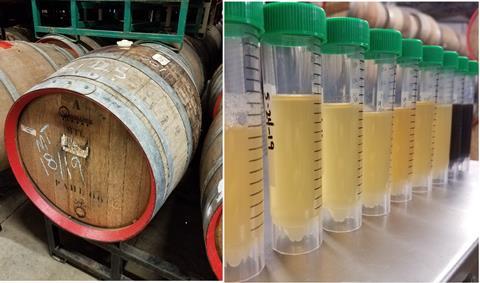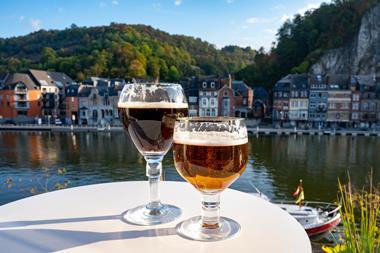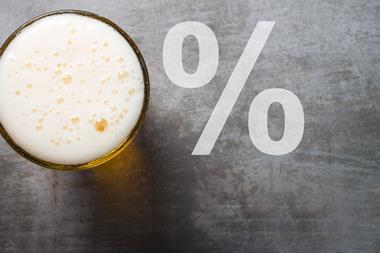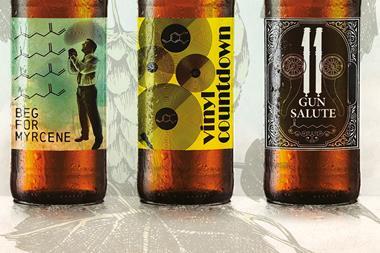Sour beers are made via a unique but opaque brewing process that has been used in Europe for centuries. Now, chemists in the US are using nuclear magnetic resonance (NMR) spectroscopy and liquid chromatography-mass spectrometry (LC–MS) to elucidate the chemistry underway during sour beer brewing.
The research, which aims to empower sour beer makers to produce a better and more predictable product by shedding light on the flavour modifiers in beverages and their likely sources, was co-led by a husband and wife team at the University of Redlands. Teresa Longin and David Soulsby presented their work at the American Chemical Society’s virtual autumn 2020 meeting. Although prior research has examined the components in finished sour beers, their study is unique because they worked with samples of beer in progress from many different batches.
Sour beers begin the same way as all beers – a brewer boils grains like wheat and barley to release the sugars. In making regular beer, brewers usually choose one strain of yeast and work hard to keep out other microbes because they want a particular flavour profile, but the process is quite different for sour brews.
‘The sour beer brewer is just throwing in all sorts of critters, and some of them like Brettanomyces are known to produce particular flavours, but sometimes these brewers don’t quite know what has gone into their beer,’ Longin said. Often they just leave the beer open to the environment so that feral yeast and bacteria fall into the batch and ferment.
Barrels of flavour
Freshly brewed sour beer is often transferred to wooden barrels where it matures for several months, and even up to three years. As it ages in the barrels, the microbes produce many metabolic products, including ethanol, acids and esters, which contribute to their distinctive tart taste.
Indeed, the wooden barrels themselves infuse trace components like vanillin and catechin, imparting flavours reminiscent of things like vanilla, grass and leather.
While these barrels are typically viewed as pristine environments in which beer, wines and other alcohols can age, they are full of potentially confounding crevices and nooks. Even though beer-makers do steam clean these barrels and sometimes use sulfur to kill organisms that grow inside of them, unanticipated chemistry still occurs.
‘Things hide out, and so once you put in this nutrient-rich source those things come out of the wood and then begin to individually affect the flavour profile,’ Soldsby explained.

Longin and Soulsby teamed up with Brian Doty, the head brewer at nearby Sour Cellars. Doty began collecting samples from different batches of his barrel-aged sour beer every two to four weeks over the course of about a year. He provided the researchers with around 15 samples per batch, and each batch was from a particular barrel.
After analysing the samples using NMR and LC-MS instruments, the team determined what compounds were present in the beer, and how the concentrations of those compounds changed over time. NMR allowed them to easily track abundantly sour and savoury molecules like acetic acid, lactic acid, and succinic acid, while LC–MS captured more unusual compounds that are more subtle contributors to flavour.
The NMR data revealed that ethanol, lactic acid, acetic acid and succinic acid all had delays in onset. ‘Ethanol typically starts immediately because the Saccharomyces yeast is dropped into the fermentation and that is working away at turning those sugars into ethanol, but even then sometimes there is a delay of like two months before the ethanol really starts to take off,’ Soulsby recalled.
There were similar findings with the lactic acid and acetic acid, which were coming from different bacteria. ‘Those bacteria need time to multiply in an environment that works for them,’ he explained. ‘So, after about maybe after four months, acetic acid begins to grow and lactic acid begins to grow.’
Using LC-MS, the researchers identified a number of compounds in the beer, most of which are nitrogen-rich. For example, they found hordatines, which are known to come from barley and have antifungal properties, as well as the amino acid tryptophan and a compound that is the product of the reaction of tryptophan with acetaldehyde, which comes from ethanol.
While levels of hordatines remained fairly constant, the tryptophan by and large decreased over time. Some of the trace compounds started off at high concentrations and then disappeared, and the researchers that they might be sugars that are being consumed by the yeast and bacteria. Other compounds grew over time, and the scientists proposed that they could be additional organic acids, phenolics, or vanillin.
The researchers plan to delve their data to determine whether Doty might have put hops in the beer that could have interacted with the bacteria and possibly changed some of their processes.












No comments yet